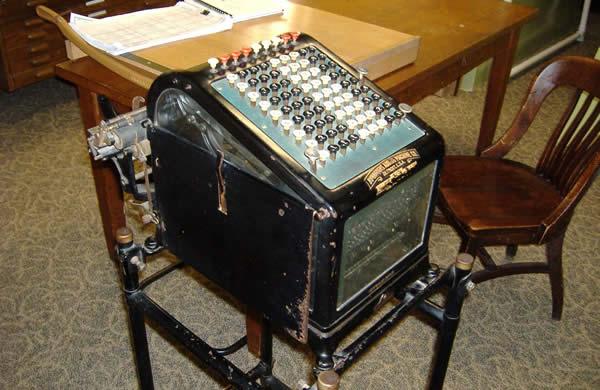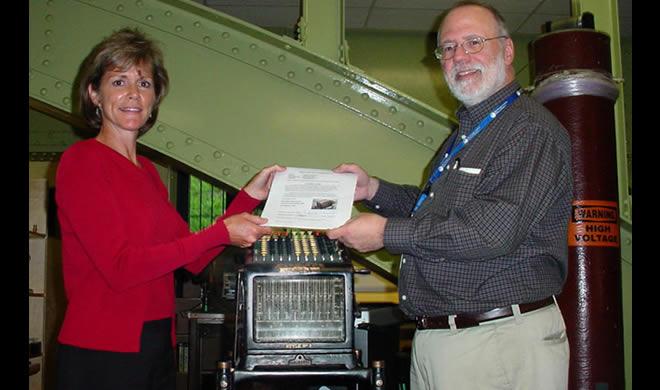
If you wanted to add sixty-three numbers, how would you go about it? How about 1,063 numbers?
Before 1888, you did it by mind, hand and pencil, no matter how many numbers contributed to the sum. That changed with the introduction of the Burroughs Registering Accountant. The machine that, "... saves brains and time, and is three times as rapid as the old way," revolutionized the way entire industries and governments dealt with number sets. It made the adding machine a staple of the office for more than a century..
On June 25, 2007, The Franklin Institute Science Museum welcomed a Burroughs Registering Accountant into its collection. This kind of machine is not unfamiliar to the Institute. Its inventor, William Seward Burroughs, was awarded The Scott Medal in 1897 from the Institute for the combination of calculator and printer. The fully mechanical machine performs only one mathematical function: addition.
When a twenty-five-year-old Burroughs became frustrated with the time involved in adding numbers as a bank clerk in 1882, he set out to speed up the process mechanically. Patent application was made in 1885 and major production started in 1888.
Praise was returned by users of the machine. R. U. Hardeman, State Treasurer of Georgia, is quoted in an undated Burroughs sales brochure, stating,
"I have been using for months the 'Burroughs Registering Accountant,' and after testing its merits and efficiency cannot see how anyone desiring accuracy coupled with expediency, can do without such a machine."
With the adding of the machine to offices came some criticism. Inexperienced users would mishandle the operating lever then complain of inaccurate results. Burroughs yielded a solution to that problem in the form of an "oil-filled dashpot," which took him seventy-two sleepless hours to concoct. It smoothed the operation of the machine, despite any mishandling by the user.
When improved Registering Accountants left the workshop in 1891, Burroughs celebrated by proclaiming, "I have ended the last of my troubles," as he threw faulty machines from a store room window, watching them smash to the ground.

Tammy Werner of Unisys hands the Deed of Gift Agreement to John Alviti, Senior Curator at The Franklin Institute. The machine is given by Gail A. Arrington, on behalf of Unisys Corporation, in memory of Joseph H. Arrington.
This particular machine, Style No. 3, serial number 39833 was obviously a functioning adding machine at one time. It was on display in a Unisys lobby for several years before more current, future-facing technologies took its place. One can only wonder how many times the lever was pulled.
Note: The object pictured above is part of The Franklin Institute's protected collection of objects. The images are © The Franklin Institute. All rights are reserved.




